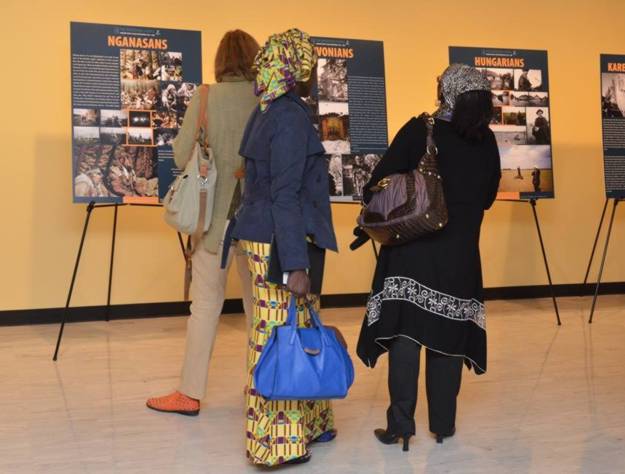 Photo by Siiri Lind
Photo by Siiri Lind
On Monday, September 22, 2014 an exhibit was opened at the UN international headquarters, in New York City, regarding the ethnographic explorative work done by Lennart Meri on the indigenous people of Finno-Ugric origin, entilted “The Waterfowl People”.
As one of the main themes [inclusive of climate change] upon which the UN is focusing during this year’s session of the General Assembly is the rights of indigenous peoples, worldwide and the importance of supporting their cultural conventions and practices and the protection of their judicial and human rights. It was an extremely appropriate time to showcase Mr. Meri’s work in this field, at the UN, in order to generate and focus attention upon these issues; especially as he, himself, was a member of such a people (one, in fact, included in the broad-ranging series of studies which encompass the work presented in “The Waterfowl People”) and understood well their struggles in remaining extant, in order to maintain and enhance their linguistic and cultural inheritance, while facing many restrictions and a lack of individual freedom.
The basis of the exhibition was the film “The Waterfowl People” (which was, indeed, being looped via laptop computer onto a display screen) and a series of standing displays, each depicting over 13 different ancestral tribes of Finno-Ugric, Hyperborean people, with pictures of their gatherings, rituals, work and daily life (etc.) as well as a short historical report on Meri’s (and his crew’s) encounter(s) with each, in English. At the front of the displays was a very effective, explanatory, geographical map of each people’s localities, which stretch over Scandinavia, Eastern Europe and Siberia.
Close to a hundred people were in attendance to hear a brief statement from Estonian Ambassador to the UN, Mr. Margus Kolga, followed by the Estonian President Toomas Hendrik Ilves. The President’s speech also centered on the subject of indigenous people.
The visitors included, of course, many Estonians from all over the US, proper, but (as one would expect at the UN General Assembly) a good number of different nationalities were to be found in attendance, including a professor from the University of Connecticut. Some Americans were stating that the circumstances of the Native Americans (a.k.a. American Indians) within the U.S., and other indigenous people were quite similar and that their cultural contributions to the world, really, required and deserved more attention. The Estonians working at the UN were seen mixing with people, answering questions and making everyone welcome.
Many thanks to all the people of the Estonian Mission to the UN, who did a wonderful job in preparing & organizing the exhibition and organizing free attendance to the UN international HQ on such a busy and complex week, which also includes the reopening of the General Assembly Hall, from renovations.
Tenno Andra













